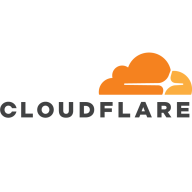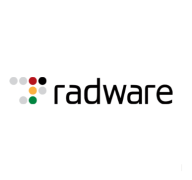


Radware Alteon and HAProxy are competitors in the application delivery and load balancing market. Radware Alteon stands out for its robust security features and scalability, while HAProxy is favored for cost-efficiency and configurability.
Features: Radware Alteon offers advanced application delivery capabilities, high availability, and robust security features. SSL offloading and application load balancing add to its comprehensive set of tools, making it suitable for enterprises needing application protection. HAProxy is praised for its simplicity, configurability, and high performance. It offers flexible integration with various deployments, along with effective load balancing algorithms and satisfactory performance metrics.
Room for Improvement: Radware Alteon could benefit from enhancements in automation, real-time traffic monitoring, and reporting. There is also a call for better cloud scalability integration and improved TLS support. HAProxy users desire stronger logging and monitoring capabilities, improved GUI, and seamless integration with cloud environments. It could also benefit from more intuitive documentation and enhanced clustering features.
Ease of Deployment and Customer Service: Radware Alteon is known for versatile deployment across on-premises, cloud, and hybrid environments, though users note its complex setup. Customer service is responsive but requires better time zone availability. HAProxy allows for easy and fast deployment, particularly with its open-source version. While technical support is not often needed, enhanced documentation and community support could improve the user experience.
Pricing and ROI: Radware Alteon is often seen as expensive compared to competitors like F5, but its robust features offer a significant ROI. The pricing is considered fair for the subscription or permanent licensing models. In contrast, HAProxy is appealing due to its open-source nature and zero licensing costs, offering a cost-effective solution that provides clear ROI based on increased performance and reliability.
WordPress security can be tricky, and that's where Cloudflare can be absolutely helpful for small businesses.
For the small project I was working on, using the basic tier provided a huge improvement at zero cost.
In terms of return on investment with Cloudflare, it costs my time to set them up, but basically once they're set up, it's done.
Operational efficiency has improved; we no longer have staff consistently monitoring backend servers during deployment or scaling events, as HAProxy's health checks and hitless reloads allow us to push changes with minimal manual intervention.
This would help us address issues promptly, especially during unforeseen events like DDoS attacks.
Cloudflare does not offer hands-on technical support to fix customer problems but rather a self-service model.
I would rate the technical support with Cloudflare as excellent every time I've had to call them.
Since we are utilizing the open-source edition, community forums, mailing lists, and GitHub have been invaluable, with typically someone having encountered the same problems we faced.
We never face support issues, and their team resolves any critical issues quickly once they are involved.
There is a dedicated expert answering even the toughest questions.
The customer service and support are excellent.
It is a SaaS tool, but the fact that they have workloads deployed across the world proves that it is a highly scalable tool.
The tool offers very good performance, even during high-traffic periods.
I rate the solution’s scalability an eight out of ten.
HAProxy's scalability is excellent; as our traffic expands, it handles load increases effortlessly.
It handles peak loads and thousands of concurrent connections without exceeding 10% utilization.
We have it deployed across multiple geographic locations, benefiting from load balancing resiliency.
I would rate it a nine out of ten for scalability.
For DDoS protection, I would not recommend Cloudflare.
I rate the solution’s stability an eight out of ten.
The service is very stable with no impacts during high-traffic periods.
This reliability serves as a key reason for our choice, providing us with confidence even when faced with heavy traffic.
We've never faced downtime, even during peak transaction hours.
There is minimal downtime, and the solution is quite stable.
There's a need for improvement in areas like AI-based DDoS attacks and Layer 7 WAF features.
Despite these challenges, overall, Cloudflare remains the preferred solution compared to Azure, AWS CloudFront, and Google Cloud Armor.
Areas like how assessment, discovery, and payload are dealt with and how it all comes into your organization can be considered when trying to make suggestions to Cloudflare for improvements.
The configuration syntax is powerful yet can become overwhelming for newcomers; a more beginner-friendly interface or a native GUI without relying on third-party tools would ease the onboarding process.
An easier desktop interface to connect to a remote server and make changes on my PC would be beneficial.
They keep integrating new features that sometimes break our production, but we use clustered systems, so we can test those software releases.
Other OEMs offer free courses and hands-on labs on new technologies and features, which we find useful.
Integration with cloud services could be improved.
That's where Cloudflare shines for smaller businesses – it's ten times cheaper than Akamai.
I find it to be cheap.
The pricing for the service is reasonable, neither excessively cheap nor prohibitively expensive.
Since we use the open-source edition, there are no licensing fees, with the main cost being the infrastructure running on EC2 instances in AWS, which helps maintain low expenses.
Setting up HAProxy didn't cost anything for me.
For our solution, it was right in the middle of price performance.
The cost of the Radware solution is reasonable and stable.
The implementation and running costs are quite high.
The most valuable features of the solution are performance and security.
Techniques like minification and image compression reduce the size of assets, leading to better performance and faster user load times.
The solution has been able to compare it to the market, and I think the product has taken great strides in automating quite a bit of things, and they use a lot of AI.
By moving all SSL termination to the load balancer, I now manage certificates in a single place, and I can also utilize Let's Encrypt with HAProxy's built-in ACME support, making renewal automatic.
The best features HAProxy offers for my setup are easy configuration, as I don't need to set up many things; I just installed it and write configurations based on my needs.
The product allows us to manage multiple networks and VLANs into a single box and add numerous web services and farms efficiently.
I find the best features to be the flexibility and ease of use.
The most valuable features include the availability with an optional high-availability mode ensuring service continuity because of the resiliency.



| Company Size | Count |
|---|---|
| Small Business | 46 |
| Midsize Enterprise | 8 |
| Large Enterprise | 25 |
| Company Size | Count |
|---|---|
| Small Business | 16 |
| Midsize Enterprise | 13 |
| Large Enterprise | 15 |
| Company Size | Count |
|---|---|
| Small Business | 17 |
| Midsize Enterprise | 17 |
| Large Enterprise | 21 |
Cloudflare is a highly-regarded Content Delivery Network (CDN) and a Distributed Denial-of-Service (DDoS) protection solution. The robust global connectivity cloud platform that is Cloudflare ensures users are able to connect to the Internet quickly, securely, and reliably. Cloudflare is one of the world's largest networks in the marketplace today. Using Cloudflare, businesses, educational entities, NGOs, vloggers, bloggers, and anyone else with an internet presence can experience more secure, faster websites and applications.
Currently, there are millions of Internet locations on Cloudflare, and the Cloudflare network
continues to grow every day by the thousands. The solution is able to fulfill the requests for
millions of websites seamlessly and serves on average 45 million HTTP requests per second.
Cloudflare has safe, secure data centers in close to 300 cities worldwide to ensure every
client request is filled as quickly as possible. It is Cloudflare’s edge network that makes this
possible by keeping content and other services as close to each client as possible, so the
information requests are always only seconds away.
Many organizations that work in democracy, civil society, human rights, or the arts are able to
access Cloudflare's highest levels of protection for free via Project Galileo. Additionally, official
election websites can be secured from hacking and fraud through Cloudflare’s Project
Athenian, also at no additional cost.
Cloudflare can also help organizations of all sizes develop a robust zero-trust strategy to
ensure the highest levels of productivity and profitability. Employees, stakeholders, and end users have a greater level of satisfaction and overall improved user experience, which can, in
turn, result in higher revenues and overall ROI. Zero-trust and BYOD (bring your own device)
access ensure end users and employees always have the best resources and technology
available to them at all times.
Cloudflare benefits
Cloudflare has many benefits. Some of its most valuable benefits include:
- Faster load times
- Robust DNS security
- Intuitive cloud Web Application Firewall (WAF)
- Free universal SSL
- Image enhancement
- Automatic browser caching
- Next-generation cloud load balancer
- Accelerated Mobile Pages (AMP)
- Rate limiting
- Minification
- Zero-trust capabilities
- Cost-effective
- Reduced carbon footprint
Reviews from real users
“Many websites require an SSL certificate because they sell stuff and want SSL. Cloudflare
comes with an SSL certificate built in. It's automatic. You sign yourself up for Cloudflare, and
an SSL certificate automatically protects your website. If you have a connection between your
website and your host, the server, Cloudflare, and the host, you don't necessarily need a
certificate.” Spencer M., Owner at Tech Exchange
“What I like best about Cloudflare is that my company can use it to trace and manage
applications and monitor traffic. The solution tells you if there's a spike in traffic. Cloudflare
also sends you a link to check your equipment and deployment and track it through peering,
so it's a valuable tool.” Daniel P., Network Engineer at Ufinet
“The most valuable feature of Cloudflare is the GUI. You are able to control the solution very
well through the interface. There is a lot of functionality that is embedded in the service.” PeerSpot user, Competence Center Manager at a tech services company
HAProxy is considered by many in the industry to be one of the fastest and most popular and trusted software load balancer products in the marketplace today. Organizations are able to immediately deploy HAProxy solutions to enable websites and applications to optimize performance, security, and observability. HAProxy solutions are available to scale to any environment.
HAProxy is an open-source product and has a robust, active, reliable community. The solutions are continually tested and improved on by the community. HAProxy offers a dynamic design to support the most modern architectures, microservices, and deployment environments (appliances, containers, virtual, and cloud).
HAProxy utilizes a cloud-native protocol, which makes it a complete solution for cloud services such as Red Hat OpenShift, OVH, Rackspace, Digital Ocean, Amazon Web Services (AWS), and more. It also can be used as the reference load balancer in OpenStack.
HAProxy Products
Reviews from Real Users
“Having the right load balancing solution – which is what HAProxy is – and protection in place gives organizations peace of mind.” - Nathanel S., Platform Architect at SES
“I use HAProxy for individuals who can not buy low balancers. I built NFV in a box and send individuals a pathway into an HAProxy VM. The setup was not difficult; it usually takes a day to complete for a VPC. When it comes to pricing, HAProxy is free.” - Nasir O., Network & Cloud Architect at Koala Compute Inc.
Radware Alteon is an advanced network solution offering exceptional load balancing, SSL offloading, and integrated application protection. Its high performance and user-friendly interface make it ideal for enhancing server capacity and reliability in demanding environments.
Radware Alteon enhances performance with robust load balancing, SSL-TLS acceleration, and comprehensive security features. Its automated threat detection and real-time analytics provide crucial insights and mitigation within high-demand scenarios. Users benefit from seamless server and application traffic management along with web application firewall capabilities, ensuring high availability and compliance with security standards. Scalability is supported through strong hardware and ease of integration, although improvements are needed in cloud service automation and interface simplicity. Challenges include response times and live traffic monitoring, with limited resources in support and documentation. Scalability faces constraints due to throughput limitations.
What are the key features of Radware Alteon?Radware Alteon is crucial for industries requiring reliable load balancing across multiple servers and applications. It supports inbound and outbound traffic management, focusing on web application protection and data center security. Businesses in telecommunications, finance, and retail utilize its capabilities for server and link balancing, ensuring adherence to strict security standards with seamless functionality across diverse network environments.
We monitor all Application Delivery Controllers (ADC) reviews to prevent fraudulent reviews and keep review quality high. We do not post reviews by company employees or direct competitors. We validate each review for authenticity via cross-reference with LinkedIn, and personal follow-up with the reviewer when necessary.